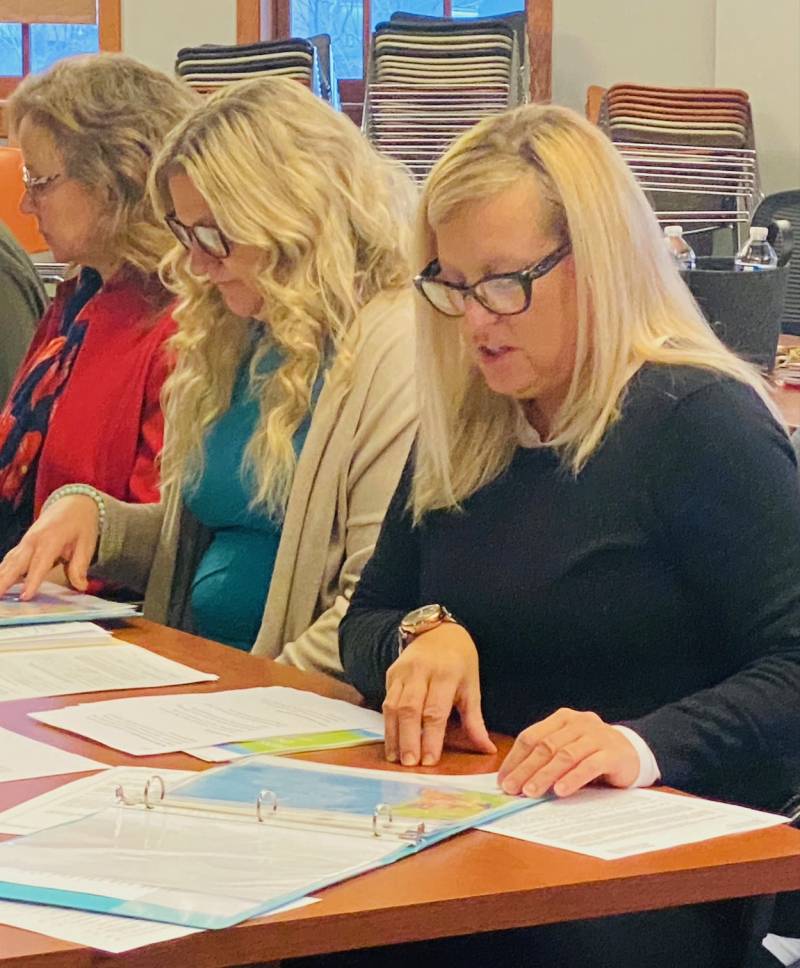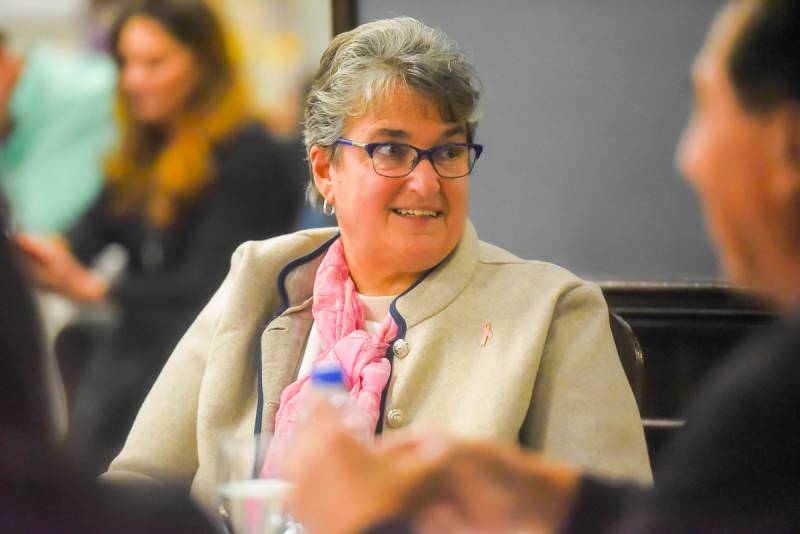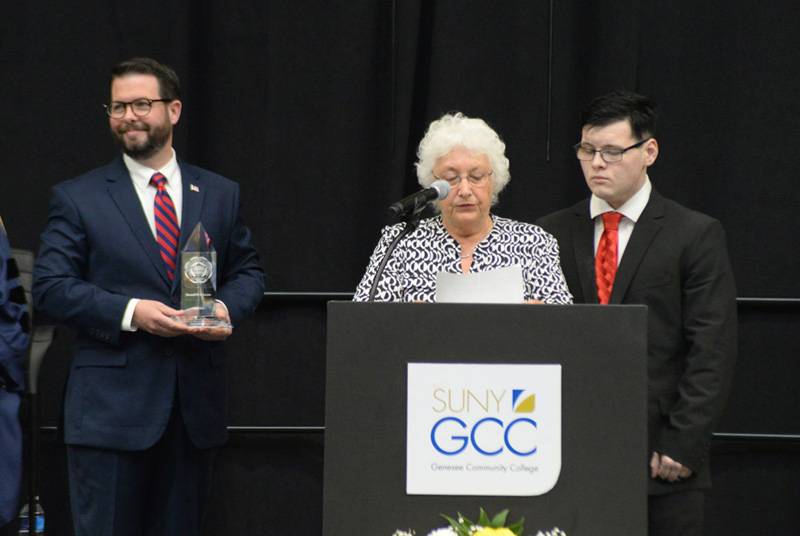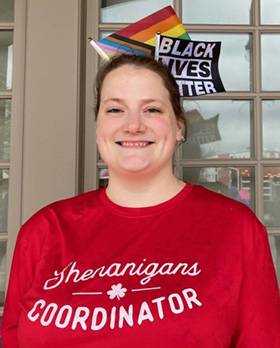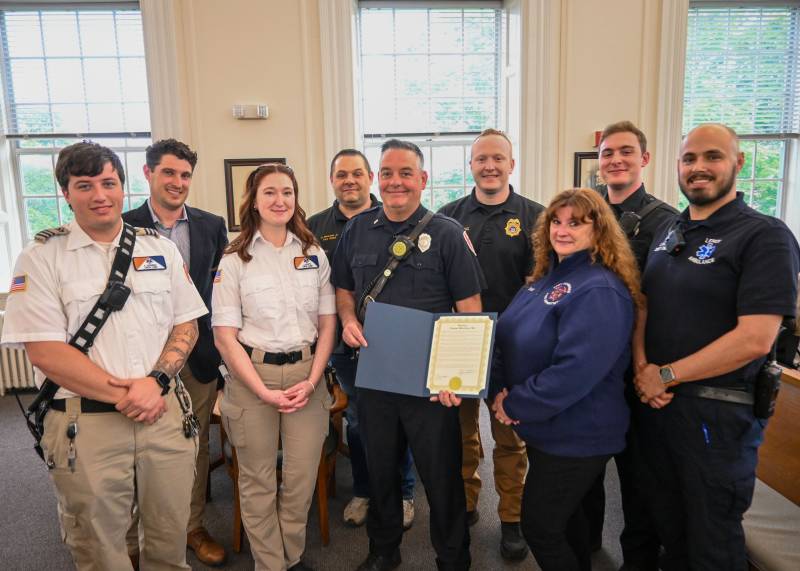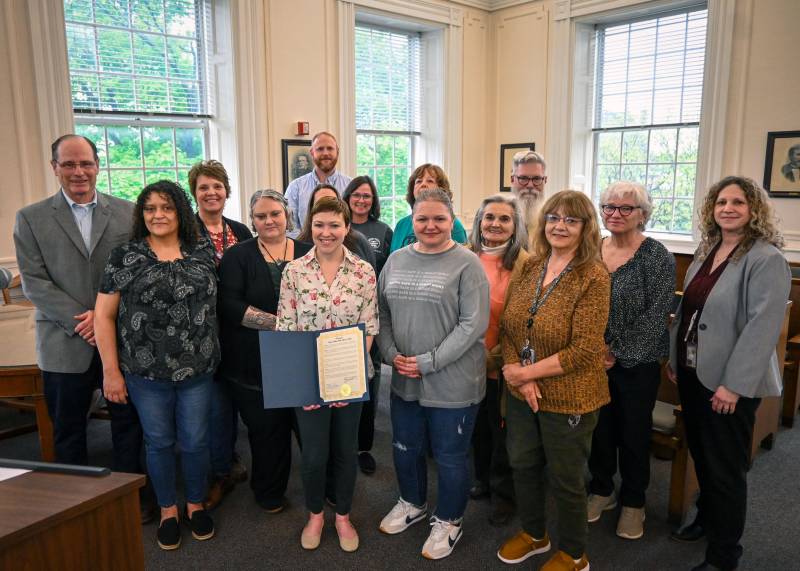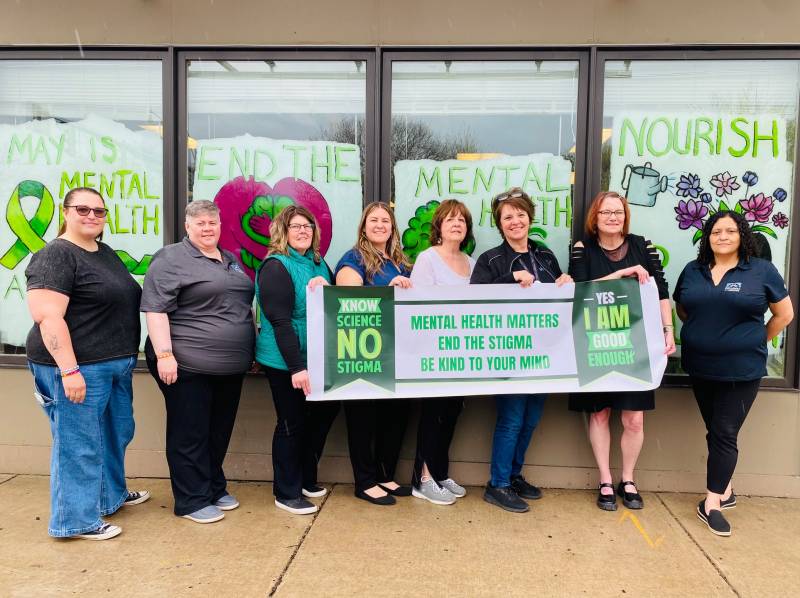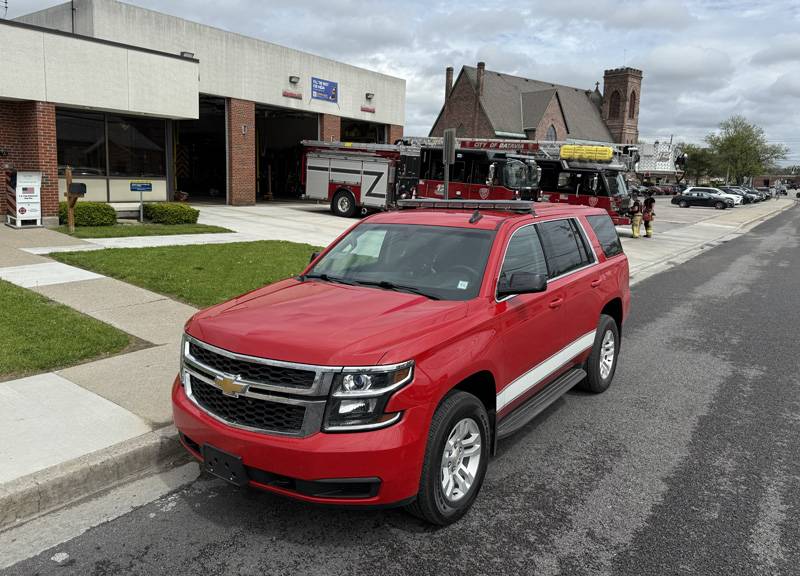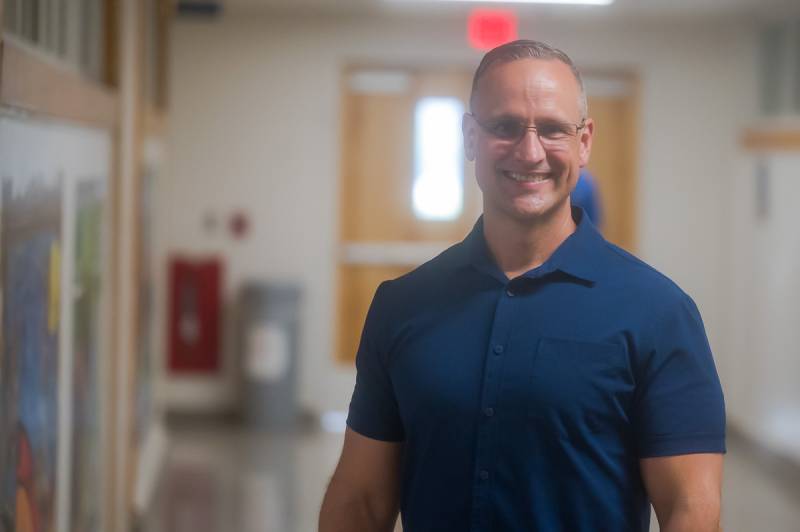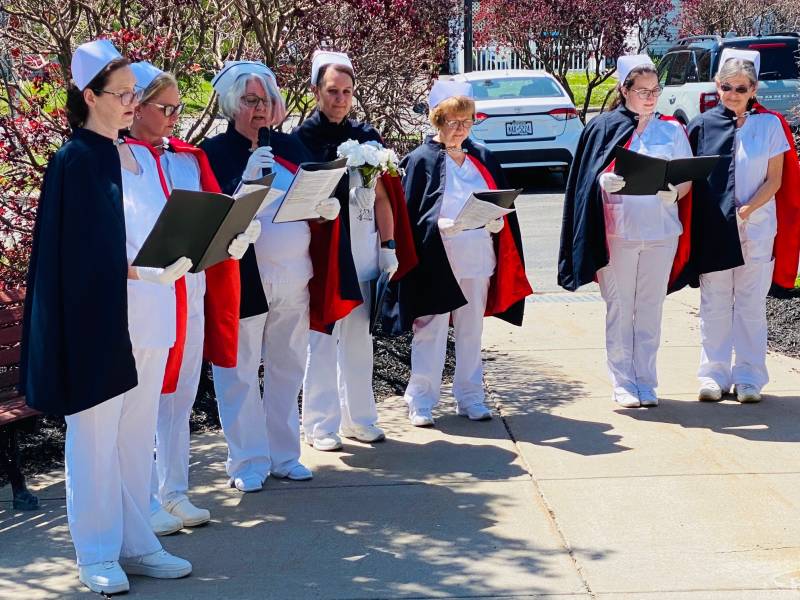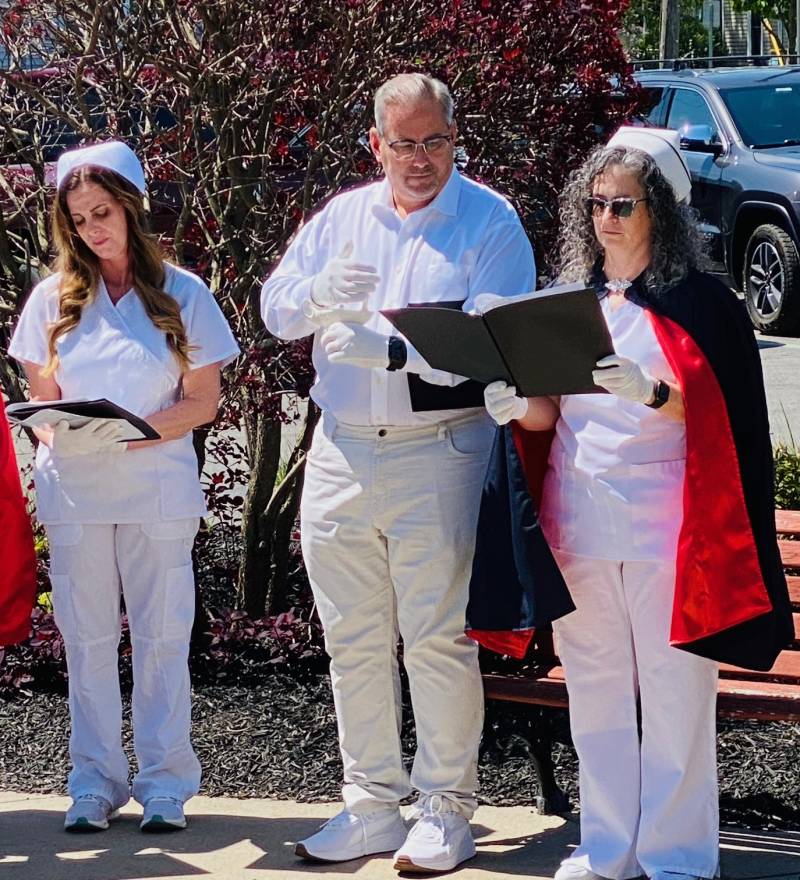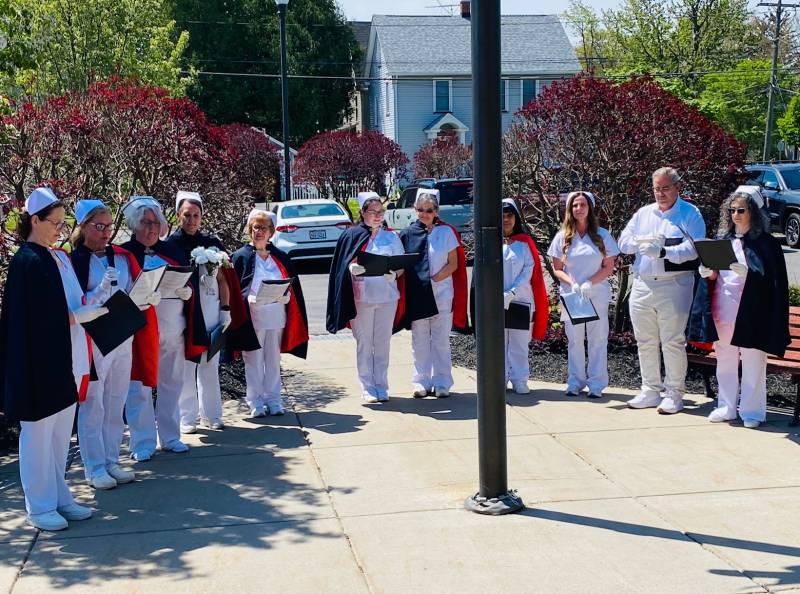Taking 'baby steps' toward a land bank for Genesee County
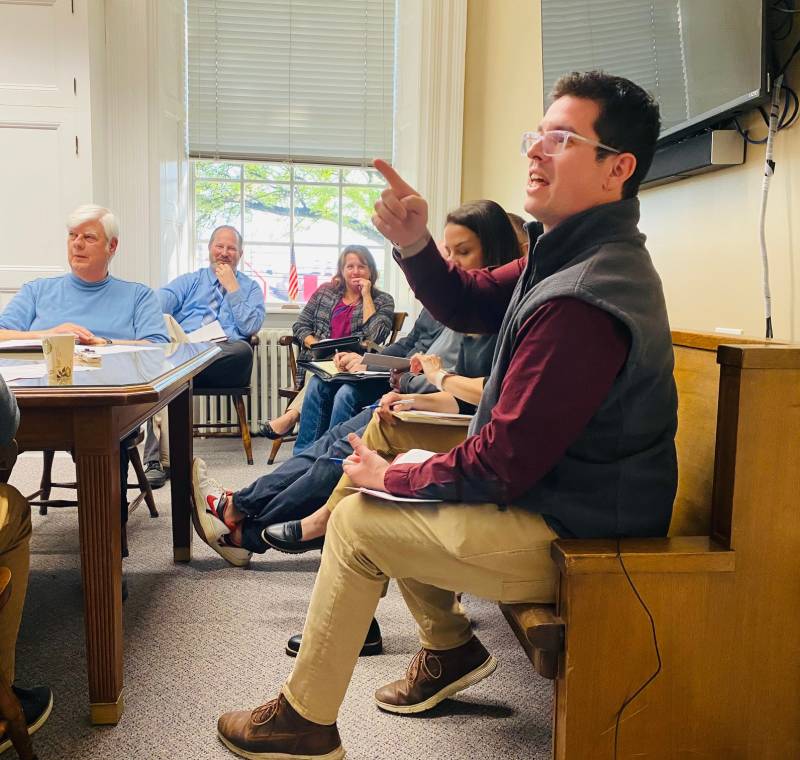
Photo by Joanne Beck
After more than an hour of discussing the concept, possibilities and potential partners for establishing a land bank with Genesee County and economic development officials, Matt Chavez, project manager of Niagara Orleans Regional Land Improvement Corporation (NORLIC), summarized the only way he thought it should go.
Batavia is the birthplace of Western New York and, therefore, holds a certain prominence in the county. So, the options of falling under an umbrella of another corporation or county didn’t make sense, he said.
“I think you deserve to have your own land bank,” he said to the group late Monday afternoon. “And the needs of your municipalities are unique, and I wouldn't claim to know them, I would learn them, certainly, obviously, we would work together, but we can work together anyway. We're your neighbor. We'll help, and we'll make those connections and those inroads, and obviously, all of our best practices, and provide as much assistance as we can in the neighborly way too.”
His colleague, Executive Director Andrea Klyczek, also encouraged the legislators to ask themselves, “What problem do you need to solve?” as they considered the ways and whys of forming a county land bank before submitting an application to the state Land Bank Association.
First things first, what’s a land bank?
A land bank is a public or quasi-governmental entity created to acquire, manage, maintain, and repurpose vacant, abandoned, tax-delinquent, or foreclosed properties with the goal of returning them to productive use in alignment with community goals.
Its primary purpose is to address blighted or deteriorated properties by temporarily holding and caring for them until they can be transferred to responsible new owners or developers who will revitalize the properties and neighborhoods.
Land banks have unique powers granted by state laws, which often include the ability to:
- Acquire tax-foreclosed properties cost-effectively
- Sell or convey properties flexibly based on community priorities rather than the highest price
- Extinguish liens and clear titles on properties
- Hold properties tax-exempt
- Generate revenue through delinquent tax fees or other mechanisms
Unlike traditional financial institutions, land banks focus on stabilizing and revitalizing neighborhoods by eliminating blight, creating affordable housing, and promoting economic development.
Legislator Marianne Clattenburg, who represents a portion of the city of Batavia, said there is a lot of industrial property from the days when manufacturing was a heavy contender and big employer in the county overall.
“We’ve got the infrastructure, if we could revamp it and market it,” she said, as Legislative Chairwoman Shelley Stein added that “we’ve got to bring these properties up to code.”
That’s another benefit of operating a land bank, Klyczek said.
“The land bank, I think, helps focus on code enforcement,” she said. “Sometimes code enforcement just doesn’t know where to begin.”
So, where does a municipality begin?
With baby steps and education, and this meeting was that first step, Stein said.
“So, ideally, we are a county land bank that works in every municipality in our county. Our latest housing needs and market analysis was done in 2018 and we've since had an update to that, but I couldn't find that one as quick as I could find this. So we know that we have commercial and industrial brownfields that have value to this community, but we don't have the wherewithal to do the cleanup,” Stein said. “And the land bank appears to be one of the, I don't want to say easier, but one of those opportunities for us to lockstep all of the necessary funding and folks that we need to pull some of that property, get it cleaned up, and it already has infrastructure for that.”
Klyczek and Chavez talked about various projects they’ve taken on — a property with no roof that sat lifeless for six years; and a burned out building that changed hands of nonprofits with no renovations — as two of an estimated 50 they have successfully turned around. Some have “moved in 30 days,” while others can take a few years, depending on the situation and condition, they said.
“We really try to be the off-ramp for people,” Chavez said.
They also try to serve as a bridge to growth, both for economic development and for neighborhoods. Klyczek gave an example of them taking a foreclosure in a high-renter-occupied block and targeting the sale for someone who will make that parcel an owner-occupied home to shift the demographics of the neighborhood.
A municipality has an obligation to put it through a public offering and take the highest bid, she said; however, a land bank can specify who the property goes to if it meets that purpose.
“This person might be offering $100K, and this person’s only offering $50K, but the one that’s offering $50 is going to put $150 rehab dollars into their property, and they live there and be part of the community,” she said. “So that’s a better outcome long-term for the municipality. So that’s the flexibility that we have.”
Chavez talked about another important aspect they have discovered since establishing their land bank in 2017: access to state funding.
“We have direct ties to state level funding, the Department of Homes and Community Renewal funds, the Land Bank initiative, which was funded in the last five budgets, six now I think, I don't know the latest, this past year's number, but last year it was 110 million dollars get allocated to land banks specifically. And only land banks can apply for that funding, and that's to acquire, stabilize, demolish, preserve green space,” he said. “Using these resources, the state has allowed us to do a lot of things that their funding typically doesn't do. So we're able to do stabilization, like putting a roof on a home, or pre-development work, like environmental testing that isn't always funded for projects. It is reimbursable grants, but the state is very responsive to the land banks, very good to work with.”
Land banks originated in the U.S. in the 1970s to manage surplus or blighted land and have since become a widely used tool for urban revitalization, especially following the foreclosure crisis of 2007-2008. They differ from simple land banking programs or land trusts in that they are established through state legislation and have specific statutory powers. They often work in partnership with local governments, community organizations, and private investors to achieve these goals.
Chavez confirmed this with an example of how private companies seemed to be energized by NORLIC’s involvement.
“It wasn't just the sites we touched and the sites that we targeted. It was the fact that we were doing the work that others, other brownfield sites, started to come back online, or started to pay their taxes, or started to clean up a little bit,” Chavez said. “So it's these strategic interventions that yield ripple effects, and that's the ROI for the community. You have a million-dollar grant, but you spread that through targeted interventions that then leverage private investments. And that's really what we’ve touched on, is our ability to leverage those private investments.
“I would encourage a municipality to think about starting a land bank, not because I do this, but because when you start the land bank now at the state level, and this is the way I understand it … you'll get a land bank initiative, Phase One Award, which is usually about $100,000, $200,000 depending on your your size. And so if it's smaller, you figure it out. But that'll cover your legal expenses, your staff, and your administrative costs. Everything, getting technical assistance, application to ESD (Empire State Development), yes, getting each community, where's your list of properties and what's important to you, and having those really specific conversations,” he said. “But outside of that, then the state is trying to fund this work, not just this initiative.
"So already there's a Phase Two that I mentioned that will fund your stabilization, demolitions, acquisitions, and you get to kind of tailor your ask based on your needs. So if you know in your community you need to acquire more strategic properties, you can ask for more acquisition dollars. I think that award is between one and 2 million," he said. "And then there's a Phase Three that you will after that be able to get. So I always tell our partners, we're not a real estate development company, we're a nonprofit, so it functions in that world. But really the the most important thing is returning these properties to productive use.”
Mark Masse, chief executive officer for the county’s Economic Development Center, talked about a potential for incorporating his agency’s Local Development Company in the mix.
“Our LDC used to be responsible for our shovel-ready park development, so it's sold property a lot, and our disposition property doesn't require us to bid it, anything like that. We are a public authority subject to 90 day notice and all of that kind of stuff. So I don't know. I'm just thinking from an ease of organizational setup, it's there, and it would save a significant amount of resources and time to do something like that,” Masse said. “And I have to talk to the board about it to see if that's something they would be interested in. But if that's a possibility, I think that might be something that can help.”
After 70 minutes of discussion, legislators seemed enthused about pursuing the idea, Clattenburg noted that the county is losing out on available state money, and Stein said “the Legislature is definitely interested.”
Afterward she further elaborated on that, although uncertain about whether EDC will play a role, it was “encouraging to hear the president of the local Development Corp. say we may have some opportunities to play in this space, and to be a value in this space.”
“And so there may be some synergies there, where we could just be the cog in the gear together,” she said, adding that this initiative has only just begun. “I'm thinking of a junkyard. That was the first conversation that both Gary Maha and I heard Niagara County talk about at an Intercounty meeting, and we came away from there thinking, wow, if they can clean up a junkyard and make that property so that it was attractive to a developer, what could we do here, right? And so that was kind of the little start of the bubbling.”
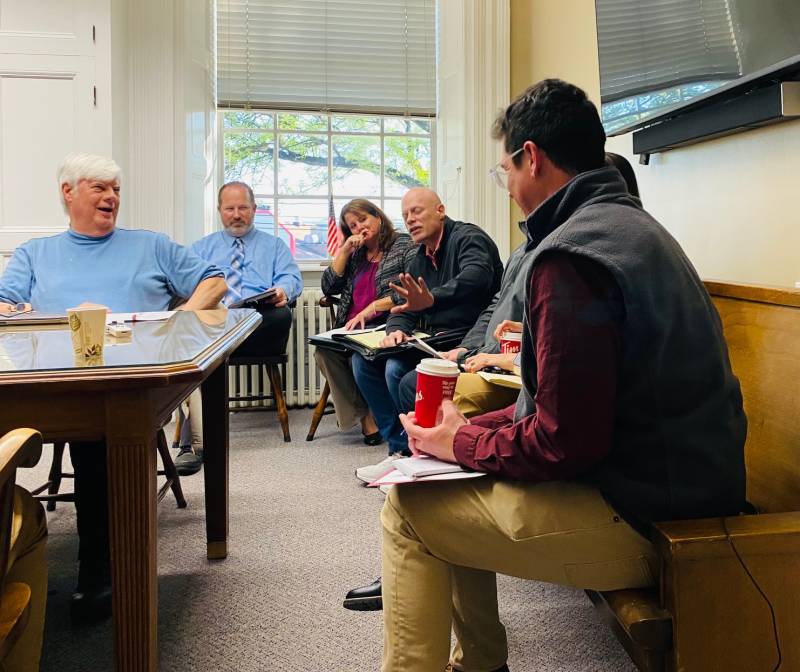
Photo by Joanne Beck

